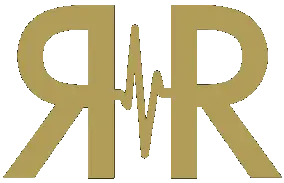A well-crafted professional resume is like a key that unlocks the door to your dream job. Just like a key needs to fit perfectly in a lock to open a door, your resume needs to fit perfectly with the needs of the hiring manager to open the door to a job offer. Without a properly crafted resume, the door to your dream job may remain firmly closed, and your job search will trudge on.
That’s why it’s essential to know the key components of a resume and how to write one that stands out from the competition.
In this blog post, we’ll look at how to write a resume.
Understanding the Key Components of a Resume
To write a winning resume, it is important to understand the key components that make up a great resume. One of the most important factors is the structure and layout of the resume. Employers and recruiters receive countless resumes, and a well-organized and visually appealing resume will have a better chance of catching their attention.
Due to this, you must know what you should include in your resume, such as your resume summary, work experience, education, certifications, and skills. Furthermore, you need to know the best way to present this information on your resume. Many may seek help in creating a professional resume.
Someone with a long and varied work history may find a chronological resume more appropriate. Therefore, they will need to arrange their work history in reverse chronological order, showcasing their most recent experience first and then proceeding to jobs held further in the past.
Important Parts of a Resume
Here are the important parts of a resume that you should include:
Contact Information
Your contact information should include your full name, email address, phone number, city, and state. List them at the top of your resume, above the resume summary, and make sure they are correct. Feel free to link to professional social media profiles such as LinkedIn, GitHub, or a personal website if you have one.
Professional Resume Summary
This is an introduction to yourself and your qualifications that should include the job you’re applying for and a few sentences that highlight your key skills and experience. Make sure you tailor your resume summary to the job you’re applying for, as hiring managers often look out for candidates who have specifically tailored their applications to meet their needs.
Work Experience
List your work experience in reverse chronological order, with the most recent jobs first. When writing about your work experience make sure you include action verbs and quantifiable accomplishments, such as “developed a new system that increased efficiency by 25%”. If you don’t have much professional experience, consider including volunteer work or internship experiences that are relevant to the role. You can use the job description for ideas on how to write your work experience.
Education Section
The education section should be listed in reverse chronological order too, beginning with your most recent qualification. Consider listing any honors, awards, or extracurricular activities that are relevant to the role you’re applying for. You can also include your grade point average (GPA) if it is above 3.0, as well as any relevant coursework that might be applicable.
Skills Section
Your resume should list both hard and soft skills. Hard skills refer to technical skills related to the job such as programming languages or software packages that you can use, while soft skills refer to personal qualities such as communication, leadership, or language skills. Consider quantifying your experience with these skills if possible by providing examples of how you have used them in a professional setting.
Certifications/Awards
Including relevant certifications and awards show hiring managers that you have achieved something outside of what was required in your current role and that you are motivated to stay up-to-date with the latest industry trends. It also shows evidence of important skills or knowledge. List these at the end of your resume, or in a separate “Awards” section. Don’t forget to use the right resume writing prompts so you can highlight the best aspects of your resume.
Writing and Formatting Tips
When writing your resume, here are a few tips to help ensure you have a professional and organized look:
- Keep it clear and concise. Try to limit your resume to no more than two pages if possible (unless for special circumstances), and use bullet points rather than long paragraphs to make it easier to read.
- Be consistent in your formatting. Make sure all of the fonts, font sizes, alignment, and line spacing are the same throughout your resume.
- Use keywords. Pay attention to the job description when writing your resume and include any relevant skills or qualifications that they’re looking for. This will help you stand out from other candidates and show that you’ve tailored your application specifically for this job. Plus, your resume can pass the applicant tracking system. You can pull the keywords from the job description.
- Proofread and edit your work carefully before sending off your application. It’s important to check for spelling mistakes, typos, and grammatical errors as these can be easily overlooked but could lead to an automatic rejection.
- Partner with a professional resume writer. Consider getting help from professional resume writers if you want to make sure your resume stands out and looks its best. They can help you create a unique and personalized resume that will get noticed by employers. Also, they can offer sound career advice for navigating the job search process.
Common Resume Mistakes to Avoid
Knowing what mistakes to avoid when writing your resume is just as important as knowing what parts of a resume to include. Here are some of the most common mistakes to avoid:
Typos and grammatical errors
Do not rely solely on spell checkers as they can often miss out on mistakes. Carefully read through your resume for typos and grammar mistakes, as well as any inaccuracies in your information. Make sure to do a full resume critique so there are no errors with your resume.
Not tailoring your resume to the job
Make sure you customize your resume for each job you apply for by highlighting the skills in the resume summary that are required for that particular role. This will show hiring managers that you have made a conscious effort to tailor your application specifically for them.
Being too general or too detailed
It’s important to strike the right balance between being specific enough to demonstrate why you’re an ideal candidate, but not so detailed that it becomes overwhelming.
Lying or exaggerating on your resume
Do not lie or exaggerate any information about your skills or qualifications, as this can easily be caught during an interview and could lead to rejection.
Poor formatting and design
Make sure you use the right font type, size, alignment, and line spacing for your resume to look professional. Consider getting help from professional resume writers to review and critique your resume.
Conclusion
Writing a resume may seem intimidating, but it doesn’t have to be. By following these simple tips and taking the time to ensure that your resume looks great, you can make sure that hiring managers notice it and take it seriously. Remember to include relevant skills, certifications, awards, and other experiences as needed.
Most importantly, don’t hesitate to ask for help. Working with one of our professional resume writers can provide an extra pair of eyes and help you create a polished, professional resume.
Book your free consultation and let us help you craft the perfect resume and take your job search to the next level.




